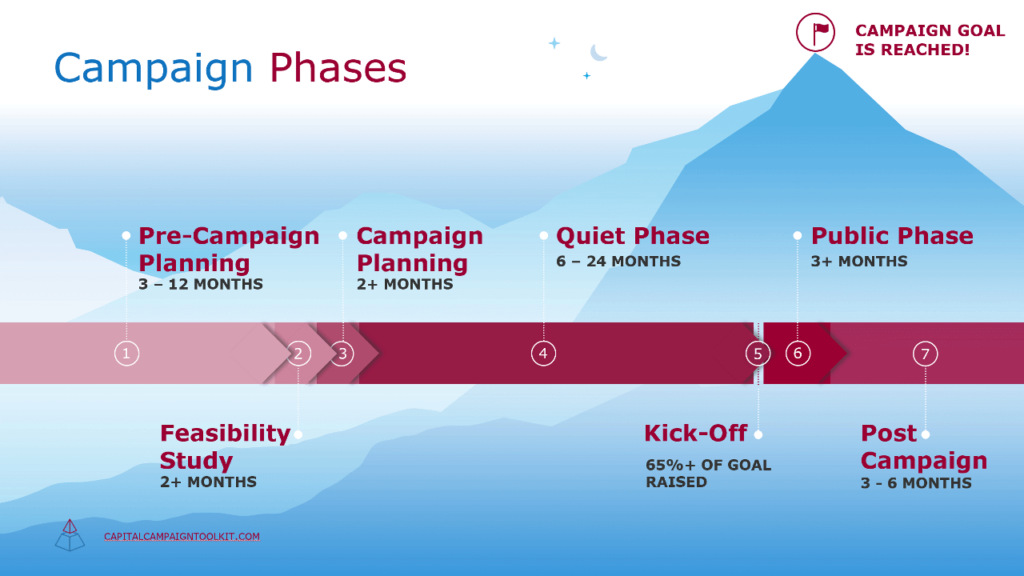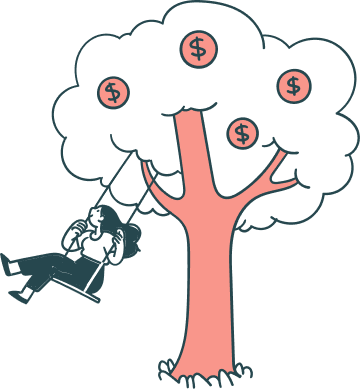Capital campaigns are hard work but have potentially major impacts on your nonprofit. These campaigns have lofty goals intended to drastically increase your nonprofit’s fundraising capacity and infrastructure, although smaller organizations with more modest (but bigger-than-average) goals can succeed with the right approach, too.
If you’re considering or planning your nonprofit’s first capital campaign, be aware of a common blind spot: the final stages of follow-up and follow-through.
After all, these campaigns represent a big investment of your time and resources. Sticking the landing will help to safeguard all your hard work, bolstering the relationships you’ve built over the course of the campaign and encouraging even more engagement in the future.
In this crash course, we’ll discuss why follow-up is so crucial for capital campaigns and offer some tips for following up effectively. But first, it’s important to understand the full structure of a capital campaign and how the final stages fit into the bigger picture.
The Full Campaign Context
A capital campaign is generally broken down into seven phases:
- Pre-campaign planning
- Feasibility study
- Campaign planning
- Quiet phase
- Campaign kick-off
- Public phase
- Post-campaign

This standard structure of a capital campaign is a bit like an iceberg—most of the work is invisible, consisting of internal planning sessions and one-on-one conversations with donors. This period includes the pre-campaign planning, feasibility study, planning, and quiet phase segments of the diagram. During this period, you’ll raise 60-70% of your total campaign goal from a handful of your most impactful donors.
But the last phases of a campaign occur publicly and cast a wider net. After kicking off the public phase of your campaign, you’ll seek support from your entire donor base through broader fundraising ideas, events, and marketing strategies.
So although the public phase of your campaign will raise only about 10% of your total goal, it’s the part of the campaign that most everyone will remember.
But you’re still not done! There’s equally important work to be done during a final period of follow-up and follow-through once the campaign is complete and your newly-funded projects are underway. But why are these last months so important?
Take a Personalized Tour
Schedule a demo with one of our fundraising consultants. We’ll show you how the Snowball platform has benefited other nonprofit organizations, and how it can help you.


The Importance of Campaign Follow-Up: An Example
Here’s a personal story about why your nonprofit’s actions after the official end of your capital campaign matter.
I made a campaign gift to an organization whose work I’ve supported in the past. The executive director made a compelling ask, I gave a gift (the largest I’ve ever made to that nonprofit), and I immediately received a heartfelt thank you. Great!
Months later, I got a bill for the next installment of the pledged gift. Receiving what felt like an impersonal tax bill in the mail didn’t feel right. A personalized note with project updates and a pledge reminder would have gone much further to reinforce the warm feelings I felt back when I made the gift. I paid the installment and received an impersonal gift receipt.
Later, I learned secondhand that the campaign’s project had been completed. I was happy to hear that, but it also felt as if my gift hadn’t mattered much to the organization in the grand scheme of their campaign since I’d never received any updates or invitations. It was disappointing, and it’s likely that many (if not all) other donors had the same experience.
The pledge is now fully paid, but my impression of the organization has soured. Compound this effect over the next couple of years, and I wouldn’t be surprised if the organization’s annual fundraising sees a significant decline.
What would have prevented this outcome? A little follow-through and communication.

How to Follow Through Effectively
The anecdote above might sound dramatic, but remember that the success of a capital campaign relies primarily on your most important donors. Preserving and growing your relationships with these core supporters is worth any extra effort.
By simply taking a few extra steps after the official end of your campaign, you’ll avoid the pitfalls that can inadvertently hamper your relationships and fundraising potential down the line. Follow this checklist to cover all your bases after the public phase of a capital campaign:
- Thank your donors—all of them, more than once, and with messages and gestures tailored to their levels of support.
- Recognize the work of your capital campaign’s volunteers who played roles throughout its duration.
- Celebrate the efforts and massive achievements of your organization’s staff.
- Collect donation pledges made to the campaign.
- Report final results to your board and community, and analyze the campaign’s performance.
- Tie up any other logistical loose ends.
- Share plenty of updates with donors and volunteers about what the success of the campaign will enable for your nonprofit, constituents, and community.
None of these tasks are massive undertakings individually, but collectively they clearly represent a good amount of additional work, time, and attention. To ensure that your team’s motivation and energy don’t fade just after the public phase ends, build these steps into your campaign staffing plans and campaign consulting agreements from the very start.
Think of campaign follow-through and donor follow-up as an investment in your future fundraising abilities. Even after completing what was probably your biggest campaign ever, you shouldn’t just go right back to business as usual. In the example story above, the organization’s failure to follow up at all will most likely harm its bottomline in the coming years.
And even if you’re not planning a capital campaign in the near future, these lessons are still valuable for your general fundraising and stewardship approaches.
Donors give you their support because they believe in and care about your work—making them feel unseen or unappreciated will do nothing to ensure they want to continue supporting your work. And if their gifts went above and beyond a typical, relatively small donation, making them feel seen and appreciated should mean more than just a quick “thank you.” Keep these points in mind and you’re sure to foster meaningful, long-lasting relationships.
Step-by-Step Campaign Checklist & Guide
This intuitive guide breaks down each step of your campaign, and the timeline allows you to visualize your whole campaign, from start to finish! Download this free campaign checklist now!
Amy Eisenstein, ACFRE, and Andrea Kihlstedt are co-founders of the Capital Campaign Toolkit, a virtual support system for nonprofit leaders running successful campaigns. The Toolkit provides all the tools, templates, and guidance you need — without breaking the bank.

Take a Personalized Tour
Schedule a demo with one of our fundraising consultants. We’ll show you how the Snowball platform has benefited other nonprofit organizations, and how it can help you.




